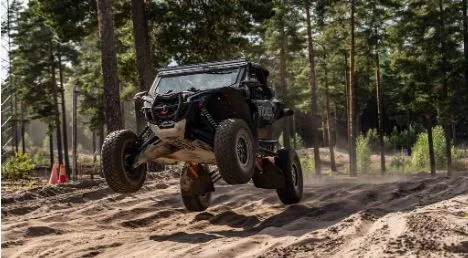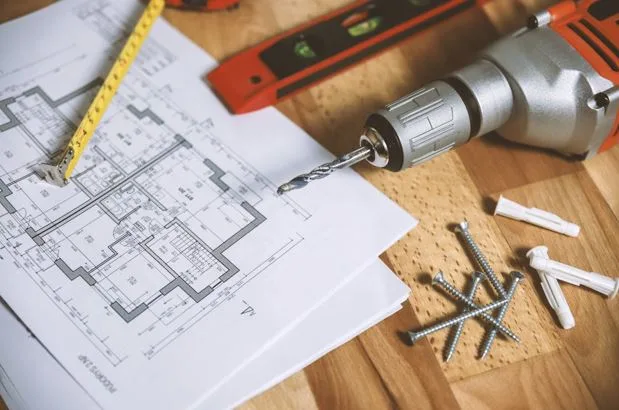How to Make a Side by Side Street Legal in Florida — Everything You Need to Know
If you’ve ever wondered how to make a side by side street legal in Florida, you’re in the right place. This comprehensive guide walks you through the big picture and the tiny details—equipment, paperwork, inspections, insurance, and day-to-day use—so you can roll from trail to town with confidence. We’ll also cover a popular alternative: registering in Montana and using that plate while traveling.
Thinking about a streamlined, paperwork-friendly path for a Montana registration? You can explore 1 Dollar Montana to see how they help people navigate Montana vehicle registration requirements in a straightforward, transparent way.
Florida Basics: What “Street Legal” Really Means
Before you get elbow-deep in upgrades, it helps to define the target. In everyday terms, how to make a side by side street legal in Florida usually means transforming an off-highway UTV into something that meets on-road equipment, insurance, and registration requirements.
Off-Highway Vehicle vs. Low-Speed Vehicle
Most side-by-sides begin life as off-highway vehicles (OHVs). To travel on public streets, many owners aim for the low-speed vehicle (LSV) category (commonly capped to 20–25 mph, and typically limited to roads posted 35 mph or less in many jurisdictions). Getting into LSV territory usually requires specific equipment, a title/registration route, and proof of insurance.
Local Rules Still Matter
Even after you’ve completed how to make a side by side street legal in Florida, local ordinances can restrict where and when you can drive. Always double-check county and city rules, especially about speed limits, road access, crossing highways, and parking.
Step-by-Step: How to Make a Side by Side Street Legal in Florida
The clearest roadmap for how to make a UTV street legal in Florida is to follow a deliberate sequence: evaluate, equip, document, insure, register, and operate responsibly.
1) Evaluate Your Machine
- Speed & gearing: If your UTV comfortably exceeds typical LSV limits, consider a speed limiter or gearing adjustments so it can qualify where required.
- VIN/serial visibility: Make sure the VIN or serial number is legible; you’ll need it for titling and registration.
- Condition & safety: Worn brakes, cracked windshields, and frayed belts can derail inspections or lead to tickets later.
2) Install Road-Required Equipment
A practical way to approach how to make a side by side street legal in Florida is to start with a clear equipment checklist. While specific interpretations can vary, owners commonly add:
- Headlights (high/low beam) and tail lights
- Stop lamps and front/rear turn signals
- Reflectors (amber front, red rear) and side reflectors
- Rearview mirror(s) (often one center or two side mirrors)
- Horn audible at a reasonable distance
- Windshield (poly or glass); if glass, add a powered wiper
- DOT-approved tires with sufficient tread for pavement
- Seat belts for each seating position
- Parking brake or effective service brake
- License plate bracket and light
- Speed limiting to comply with LSV caps where applicable
Pro tip: Document each upgrade with receipts and photos. That paper trail helps during inspections and simplifies resale.
3) Handle the Paperwork
Paperwork needs can vary by county office, but typically include: proof of ownership (manufacturer’s certificate of origin or title), completed application for title/registration, equipment affidavit or inspection form, identification and proof of address, and odometer/speed capability declarations (as required for LSV categorization). If your UTV was previously off-road only, expect extra attention to the conversion details. Bring photos of your installed equipment and, when possible, part numbers to show DOT compliance.
4) Get Insurance Lined Up
Insurance is part of the equation for how to make a side by side street legal in Florida. Ask for liability coverage that meets minimums for an on-road vehicle, optional comprehensive/collision, and uninsured/underinsured motorist coverage. Tell your insurer you’re converting a UTV for on-road use to keep claims hassle-free.
5) Title and Registration
Once the equipment and insurance are set, work with your tax collector or motor vehicle office to title and register the UTV in the appropriate category (often LSV). Expect to pay taxes and fees, present your documents, and receive a license plate and registration. Affix the plate with illumination and ensure your frame doesn’t obscure any characters.
6) Operate Within the Rules
After you complete how to make a side by side street legal in Florida at the state level, remember that day-to-day operation still has guardrails: stick to permitted roads (often those posted 35 mph or lower), use lighting at dusk/night and in poor visibility, keep insurance and registration documents accessible, maintain your equipment, and be courteous on busy streets.
Equipment Deep-Dive for Pavement Confidence
Lighting & Visibility
Bright, correctly aimed headlights and functioning turn signals set you apart from purely off-road builds. Wire them neatly with heat-shrink and proper fusing. Add a license plate light to pass nighttime requirements.
Mirrors & Awareness
Two side mirrors dramatically improve lane positioning and help when turning across traffic. Many owners keep a center mirror for glances on trails and roads alike.
Tires & Braking
DOT-marked tires improve grip and braking feel on asphalt. If you upgraded tire size, consider a brake inspection and, if needed, performance brake pads or a proportioning tweak to keep stopping distances tight.
Windshield & Wiper
If you choose a glass windshield, install a powered wiper. If you prefer polycarbonate, keep it clean with non-abrasive products to avoid haze and scratches that hurt visibility at night.
Paperwork and Fees: What to Expect
Common Documents
When you’re working through how to make a side by side street legal in Florida, assemble: ownership proof (MCO/title), bill of sale if applicable, ID and proof of Florida address, insurance card, and any inspection or equipment verification forms required locally.
Typical Costs
Budget for title and registration fees, sales or use tax depending on your situation, equipment costs (lights, mirrors, glass, wipers, tires), and professional labor if you don’t DIY. Keep all receipts, especially for DOT tires and glass—they’re your proof of road-readiness.
Avoid These Common Pitfalls
Exceeding Speed Limits for Your Category
If your vehicle easily surpasses the LSV cap, officers may treat it as out of class. Install a limiter, adjust gearing, or confirm how your local office evaluates top speed.
Skipping the Wiper on a Glass Windshield
Many owners add a beautiful glass pane and forget the powered wiper. That’s a frequent fail point and an easy fix.
Using Off-Road-Only Rubber on Asphalt
Non-DOT tires can attract attention and reduce wet-road grip. Swap to DOT-rated tires with the correct load index.
Assuming One Plate Equals Every Road
Even after learning how to make a side by side street legal in Florida, controlled-access highways are usually off-limits. Plan your routes along surface streets and be ready to detour where local rules demand it.
Benefits of Registering and Making Your Side-by-Side Street Legal in Montana
Some owners compare Florida’s path with a Montana registration strategy for travel and multi-state use. Benefits people often cite include:
Potentially Streamlined Process
Montana is widely known for a straightforward approach to registering a broad range of vehicles. For owners who frequently travel, that simplicity can be attractive.
Travel Flexibility
If your side-by-side is street-legal in Montana and you’re visiting or passing through other states, it may help you operate more seamlessly during trips (subject to each locality’s rules). You still need to obey local speed and road-access restrictions wherever you drive.
Documentation Clarity
A clean title and current plate can reduce roadside confusion. Officers can quickly verify registration status, which is valuable when your vehicle doesn’t look like a typical car or truck.
Support With Paperwork
If you’re considering this path, 1 Dollar Montana provides a simple way to learn what documents and steps you’ll need to register in Montana, and how to keep everything above board.
Important note: If your UTV primarily lives or is garaged in Florida, you’re still responsible for Florida’s tax and registration obligations. Montana registration doesn’t override where you keep and use your vehicle most of the time. Always follow the rules in the place you reside and operate.
Insurance & Safety Essentials
Insurance That Matches Your Use
Tell your agent you’ll operate on public roads. Ask about liability minimums, accessory coverage for roofs, winches, and light bars, and whether your policy covers passengers and towing.
Visibility, Noise, and Courtesy
A side-by-side sits taller and sounds louder than many cars. Use turn signals early, mind your exhaust volume, and give pedestrians and cyclists extra space.
Maintenance on a Schedule
Inspect brakes and pads regularly, especially with larger tires. Re-torque suspension fasteners and check wheel bearings after major off-road trips. Keep your wiper blade fresh and your windshield crystal-clear for night driving.
Frequently Asked Questions
Can I drive on any road once I’m plated?
Usually not. Even after learning how to make a side by side street legal in Florida, most owners stick to lower-speed roads and avoid controlled-access highways. Watch for local restrictions.
Do I need a special driver’s license?
In most cases, a regular driver’s license is sufficient for an LSV-classified UTV, but always confirm locally.
What if my UTV can exceed 25 mph?
You can often limit speed to qualify as an LSV, or you’ll need to explore a different classification, which may have stricter requirements.
How do I prove my equipment is compliant?
Keep receipts and model numbers for lights, glass, wipers, mirrors, and tires. Photos of the installed gear are helpful during inspections and resale.
Is insurance really necessary?
Yes—on-road operation normally requires it, and it protects you financially if something goes wrong.
A Quick Checklist to Keep You on Track
- Confirm your intended category (often LSV)
- Install required road equipment (lights, mirrors, horn, windshield, wiper if glass, DOT tires, plate light)
- Gather ownership documents and ID
- Obtain on-road insurance
- Title and register, then affix the plate
- Drive only on permitted roads and respect local ordinances
Bringing It All Together
Now that you’ve seen how to make a side by side street legal in Florida from every angle—equipment, paperwork, insurance, and everyday operating rules—you can build a compliant, reliable setup that’s genuinely enjoyable to use.
If a Montana registration route makes sense for your travels and paperwork preferences, consider visiting 1 Dollar Montana to understand how their process helps people get registered quickly and clearly.
With good planning and the right parts, making a side by side street legal in Florida becomes a straightforward project: safer lighting, better visibility, verified documents, and a plate that opens up everyday conveniences—fuel stops, coffee runs, neighborhood errands—without giving up the weekend trail fun.





